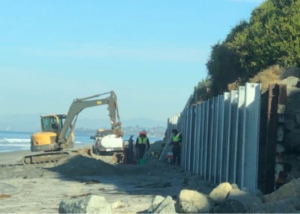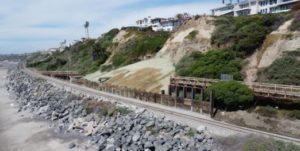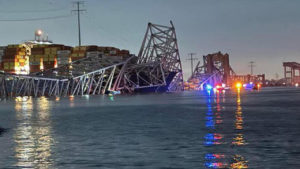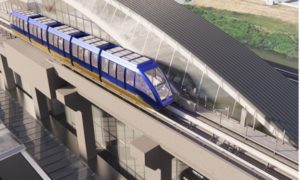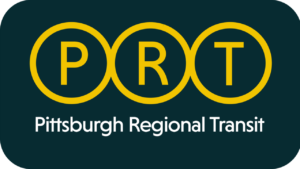USDOT Awards $4.9B for Mega, INFRA Projects
Written by Marybeth Luczak, Executive Editor, Railway Age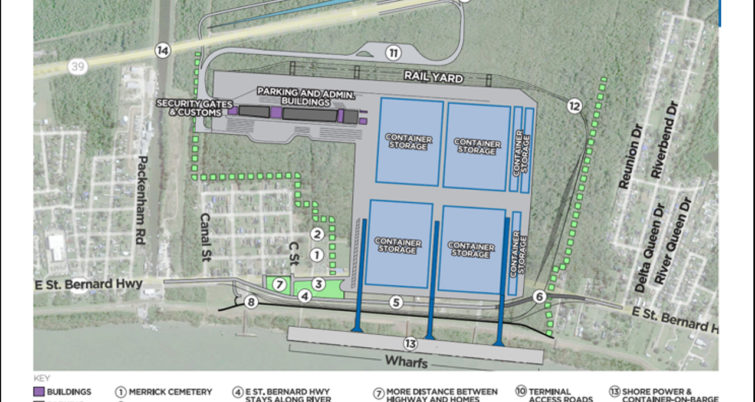
The U.S. Department of Transportation (USDOT) is distributing $4.9 billion to 37 nationwide projects through the FY 2023-24 Mega (National Infrastructure Project Assistance) and INFRA (Infrastructure for Rebuilding America) grant programs. Twelve rail-related projects will receive a total of $1.6 billion; the Pier B project at the Port of Long Beach and the Louisiana International Terminal project at the Port of New Orleans are among the winners.
The Mega program, which was created by the Bipartisan Infrastructure Law (BIL) and provides $5 billion in funding through 2026, focuses on projects that are “uniquely large, complex and difficult to fund under traditional grant programs,” USDOT reported Jan. 25. For this round of funding, investments are made in 11 projects—five rail-related—that are said to “generate national and regional economic, mobility and safety benefits.” Among the project types eligible for awards: a highway or bridge project on the National Multimodal Freight Network; highway or bridge project on the National Highway Freight Network; highway or bridge project on the National Highway System; freight intermodal (including public ports) or freight rail project that provides public benefit; highway/rail grade separation or elimination project; intercity passenger rail project; and public transportation project that is eligible under assistance under Chapter 53 of title 49 and is a part of any of the project types described above.
The INFRA program, for which funding was increased more than 50% by the BIL, also funds “large scale, transformational infrastructure projects,” according to USDOT. For this round of funding, investments are made in 28 projects—eight rail-related—that are said to improve the “safety, efficiency, and reliability of the movement of freight and people in and across rural and urban areas.” Among the project types eligible for awards: a highway freight project on the National Highway Freight Network; highway or bridge project on the National Highway System; freight intermodal, freight rail, or freight project within the boundaries of a public or private freight rail, water (including ports), or intermodal facility and that is a surface transportation infrastructure project necessary to facilitate direct intermodal interchange, transfer, or access into or out of the facility; highway/rail grade crossing or grade separation project; wildlife crossing project; surface transportation project within the boundaries or functionally connected to an international border crossing that improves a facility owned by federal/state/local government and increases throughput efficiency; project for a marine highway corridor that is functionally connected to the National Highway Freight Network and is likely to reduce road mobile source emissions; and highway, bridge, or freight project on the National Multimodal Freight Network.
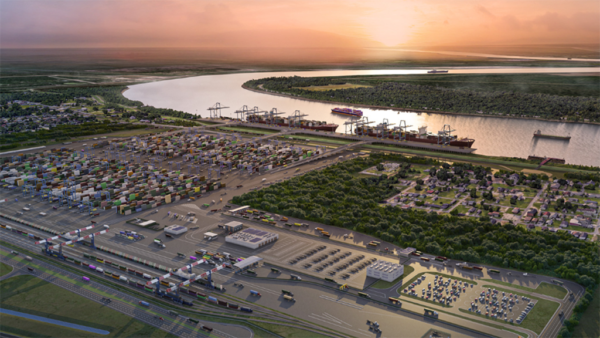
Two projects received awards from both programs—including one that is rail-related, the Port of New Orleans’s new International Container Terminal in Louisiana. According to USDOT, this follows through “on the Department’s commitment to invest in non-traditional, multimodal projects that have been neglected because of complications around how to fund them.”
USDOT said that applications for the grants were evaluated based on criteria that include safety; state of good repair; economic impacts, freight movements and job creation; climate change, resilience, and the environment; equity, multimodal options and quality of life; and innovation areas such as technology, project delivery, and financing. The Department said it also considered cost effectiveness and project readiness in evaluating the applications received.
The rail-related FY 2023-24 Mega project grant winners include:
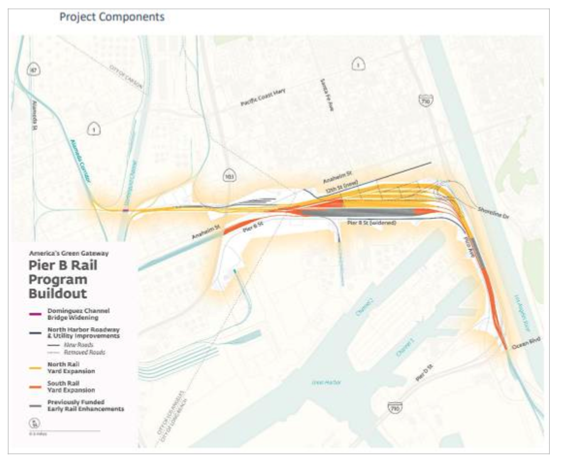
- America’s Green Gateway: Pier B Rail Program Buildout (Long Beach, Calif.): The city of Long Beach will receive $283.4 million for the Pier B On-Dock Rail Support Facility Program to complete the North Rail Yard expansion and the South Rail Yard Expansion. (The Port of Long Beach announced this award in December). The North Rail Yard Expansion will construct two new mainline tracks, five new 10,000-foot receiving and departure tracks extending from west of the Dominguez Channel to the Pico Avenue Rail Corridor, and 26 new storage tracks north of the existing Pier B Yard. It also includes active at-grade warning devices and railroad pre-emption with a new traffic signal at Pier B Street. The South Rail Yard Expansion will add seven new 3,000-foot storage tracks, lengthen and rehabilitate seven existing 3,000-foot storage tracks, construct two new tracks in the Pico Avenue Rail Corridor, reconfigure tracks near Pier D Street, and construct a new compressed air facility. According to USDOT, the project work “will significantly enhance container-on-rail service to and from the ports of Long Beach and Los Angeles, facilitating 20% of container throughput at the ports that moves exclusively by rail.” Additionally, it is slated to improve the connections between the ports and the BNSF and Union Pacific (UP) rail networks. USDOT noted that the project applies a Port-Wide Project Labor Agreement that the Port of Long Beach executed with the Los Angeles/Orange Counties Building and Construction Trades Council and the Signatory Craft Councils and Local Unions.
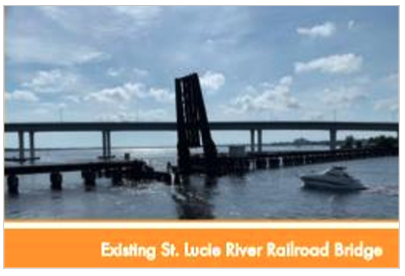
- St. Lucie River Railroad Bridge Replacement Project (Stuart, Fla.): The city of Stuart will receive $130.5 million to replace the existing 100-year-old St. Lucie River Railroad Bridge with a new double-track structure that USDOT said will have “significantly improved vertical and horizontal navigational clearances.” The project addresses “increasing conflicts between maritime needs for longer or more frequent bridge openings and rail needs for shorter and less frequent bridge closings,” the Department noted. It supports both freight and passenger rail, with the new Brightline private-sector passenger rail service between Orlando and South Florida expected to add 32 bridge crossings daily, while also decreasing the potential for blocked grade crossings and vehicle collisions.
- Louisiana International Terminal Project (St. Bernard Parish, La.): The Port of New Orleans will receive $73.8 million to construct a new container terminal on the Gulf Coast that is not air-draft restricted. The project will include approximately 1,700-feet of wharf, two ramps to connect the wharf to the container yard, an automated stacking crane yard, utilities, storm drainage, all necessary buildings for operations, entry and exit gates, intermodal rail yard, realignment of Norfolk Southern (NS) track, and realignment of the St. Bernard Highway. The new terminal will be an alternative to terminals located farther inland on the Mississippi River, which cannot accommodate larger vessels. This project will also receive funding from the INFRA Grant Program ($226.2 million; scroll down) for a full *MPDG award amount. The project is expected to create about 4,300 new jobs in the Violet community of St. Bernard Parish. The project will be delivered through a public-private partnership. (For more on the project, read: “Port NOLA LIT Up with $226MM INFRA Grant.”)
- I-895 Baltimore Harbor Tunnel at Frankfurst Avenue Interchange Improvements Project (Baltimore, Md.): The Maryland Transportation Authority will receive $80 million to demolish the existing toll plaza and incorporate overhead gantries to facilitate automatic electronic tolling at highway speeds. The project will also replace two aging bridges, reconstruct Frankfurst Avenue, realign and reconstruct interchanges, rebuild a section of the I-895 main line, and improve an at-grade rail crossing. The project scope also includes the addition of new stormwater management facilities and landscaping.
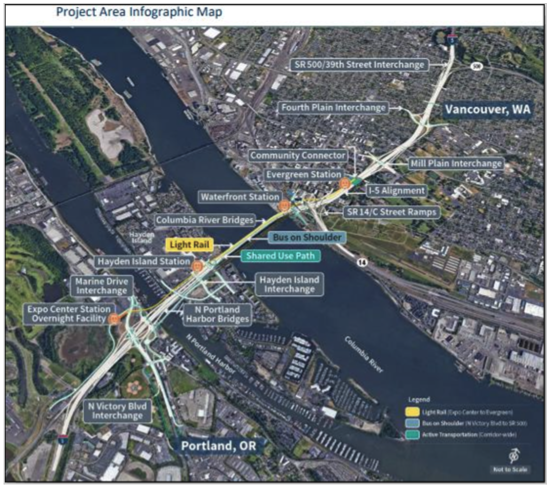
- Interstate Bridge Replacement Program (Portland, Ore., and Vancouver, Wash.): The Washington State Department of Transportation (DOT) in partnership with the Oregon DOT will receive $600 million to update Interstate 5 with a “seismically resilient” replacement of the I-5 bridge over the Columbia River, connecting Portland and Vancouver. The new bridge will include transit improvements “such as additional light-rail transit service, enhanced zero-emission express bus service, and the expansion of active transportation networks,” USDOT said. This award also includes FY 2025 Mega funding.
The rail-related FY 2023-24 INFRA project grant winners include:
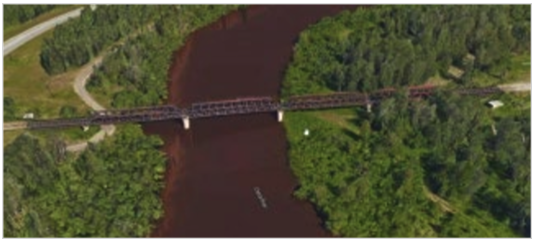
- ARRC Bridge Replacement (Fairbanks, Ala.): Alaska Railroad Corporation (ARRC) will receive $17.1 million to replace an aging railroad bridge that crosses the Chena River at Fort Wainwright in Fairbanks. The proposed bridge will have a reduced total length of approximately 342 feet and consist of four spans (two new approach spans and two new through-plate girder spans) placed atop existing piers. The remaining distance over low-lying ground will be replaced with an embankment, reducing the total bridge length by nearly half, according to USDOT. The project is slated to reduce emissions due to avoided truck miles from cargo diversions and improve the transportation of bulk goods and intermodal shipments by rail. The bridge is part of ARRC’s Eielson Branch, which links ARRC’s main line at Fairbanks with Fort Wainwright and Eielson Air Force Base.
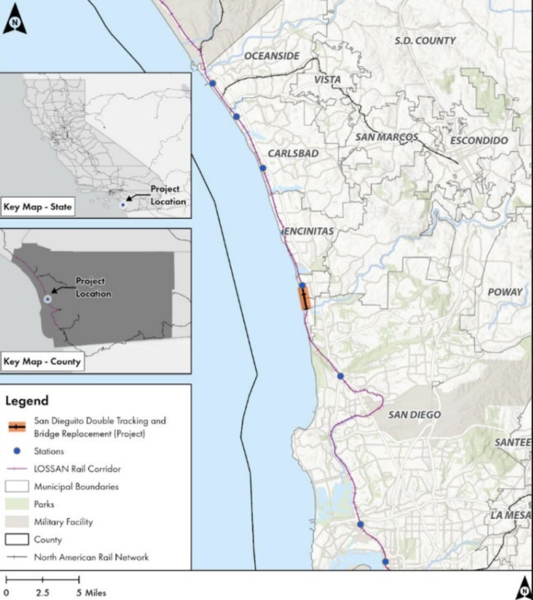
- San Dieguito Bridge Replacement Project (San Diego, Calif.): North County Transit District will receive $53.9 million to replace the San Dieguito River Railway Bridge, a 107-year-old single-track wooden trestle that currently sits below the 100-year FEMA flood elevation. The replacement bridge will be double-tracked and the height of the tracks will be raised by eight feet to account for increased sea level changes, according to USDOT. The bridge structure will have new pedestrian and bicyclist infrastructure, which the Department said would improve safety in an area where there is frequent trespassing across the bridge to get to the coast and nearby trails.
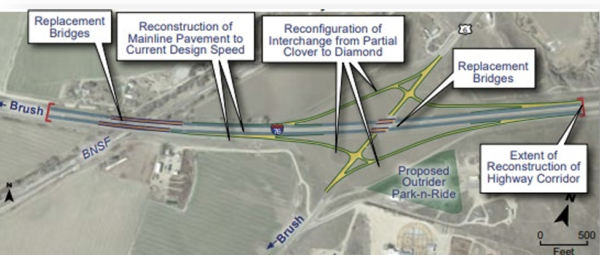
- I-76 Reconstruction and Improvements Project (Morgan County, Colo.): Morgan County will receive $29.2 million to reconstruct I-76 within its current lane configuration, including the reconstruction of about 1.45 miles of interstate corridor in both directions, replacement of four bridges over I-76 (two bridges on I-76 over the BNSF rail lines, and two bridges that pass over US 6 at its interchange with I-76), the reconfiguration of the interchange with US 6, and the installation of a Park-n-Ride mobility hub.
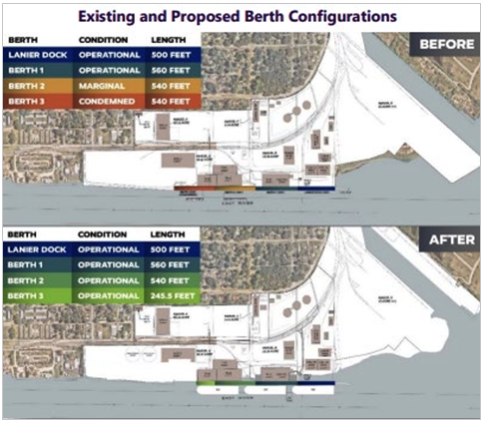
- East River Terminal Berth Replacement Project (Garden City, Ga.): The Georgia Ports Authority will receive $15.1 million to replace a port berth and two vessel berths at the Port of Brunswick’s East River Terminal. The project will demolish and replace the Berth #2 main dock and demolish and rebuild Berth #3 at half its existing length to facilitate the long-term use of the terminal by vessels carrying U.S. exports, according to USDOT. The project will also construct a continuous marine fender system for Berths #2 and #3, install electrical and water utilities, and dredge the Berth #3 vessel berthing area. “The project will use public investment to sustain a growing export business of a renewable energy source (wood pellets), partnering with private investment to provide an efficient trade lane,” the Department reported. “Without the project, U.S. exports of pellets will become marginally less competitive, and additional costs will be imposed as these exports will have to use alternative ports generating additional overland truck movements at higher cost. This project will also reduce greenhouse gas emissions by supporting a modal shift from truck to rail for the transportation of commodities to the Port of Brunswick.”
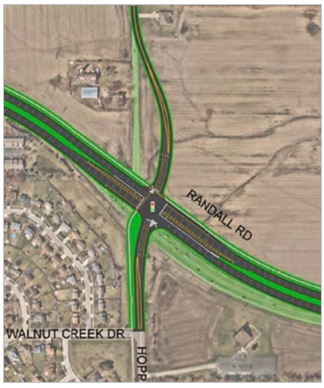
- Randall Road Grade Separation and Intersection Safety Improvements Project (Kane County, Ill.):Kane County will receive $25 million to construct a grade separation of Randall Road over CN trackage and reconstruct an existing intersection at Hopps Road adjacent to the grade separation. “The project will significantly reduce the occurrence of crashes in the project area through road realignment and pedestrian improvements,” USDOT said. “Additionally, the grade separation will allow for greater emergency vehicle access as the current grade crossing can block emergency vehicles from reaching local hospitals or emergency calls.”
- Louisiana International Terminal Project (St. Bernard Parish, La.): The Port of New Orleans will receive $226.2 million to construct a new container terminal on the Gulf Coast that is not air-draft restricted. The project will include approximately 1,700-feet of wharf, two ramps to connect the wharf to the container yard, an automated stacking crane yard, utilities, storm drainage, all necessary buildings for operations, entry and exit gates, intermodal rail yard, realignment of Norfolk Southern track, and realignment of the St. Bernard Highway. The new terminal will be an alternative to terminals located farther inland on the Mississippi River, which cannot accommodate larger vessels. This project will also receive funding from the Mega Grant Program ($73.8 million; scroll up) for a full *MPDG award amount. The project is expected to create about 4,300 new jobs in the Violet community of St. Bernard Parish. The project will be delivered through a public-private partnership. (For more on the project, read: “Port NOLA LIT Up with $226MM INFRA Grant.”)
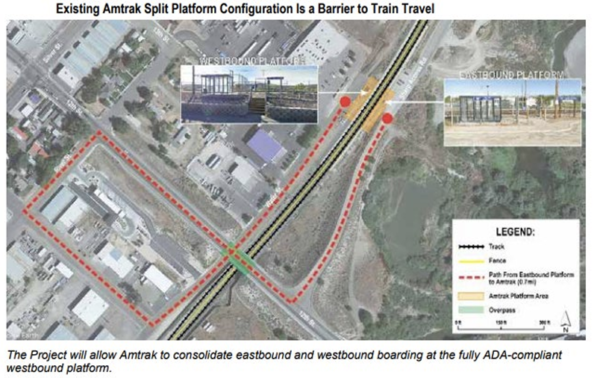
- Elko Nevada Rail Corridor Enhancement Project (Elko, Nev.): The Nevada Department of Transportation (DOT) will receive $28 million to design and construct improvements on the UP Overland Route at the UP Elko Yard. The improvements include two new power-operated crossovers between existing bi-directional tracks and a new right-hand crossover connection track so trains can be diverted around the yard during freight train work events; new yard track extensions to accommodate work events in the rail yard off the main tracks; improved walking surfaces in the yard and upgraded infrastructure; and new or enhanced track and wayside signal infrastructure, including an interface with an existing Positive Train Control system. “The project will address known rail vulnerabilities and upgrade railroad infrastructure and assets,” reported the USDOT, which added that Nevada DOT expects the project to reduce an average of 2.5 hours of delay per freight train using the UP Overland Corridor. This corridor currently handles 14-18 freight trains per day serving the West Coast and the Midwest, including cost-sensitive exports and significant import volumes, USDOT said. The project is also slated to benefit Amtrak operations, as it will consolidate the Amtrak boarding platform for eastbound and westbound riders, providing “more direct and accessible connections between the boarding platform, transit and parking,” according to USDOT.

- Route 168 Reconstruction Project (Camden County, N.J.): The New Jersey Department of Transportation (DOT) will receive $8 million to improve Route 168 with reconstructed pavement (from approximately M.P. 9.80 to 10.75), resurfaced pavement (from approximately M.P. 8.56 to 9.80), “Road Diet” and “Complete Streets” enhancements (from approximately M.P. 9.80 to 10.75), ADA accessible sidewalks, approximately eight signalized intersections, bicycle lanes (from approximately M.P. 9.80 to 10.44), improved bus stops, at-grade rail crossing safety improvements, guiderail upgrades, utility relocations, upgraded stormwater management infrastructure, and Intelligent Transportation System deployment.
As with last year’s awards, the Mega and INFRA programs were “significantly oversubscribed,” according to the USDOT, which received 117 applications requesting $24.7 billion from Mega and 190 applications requesting $24.8 billion from INFRA, “far exceeding the amounts of funding available.” The next application period is expected to open in mid-2024.
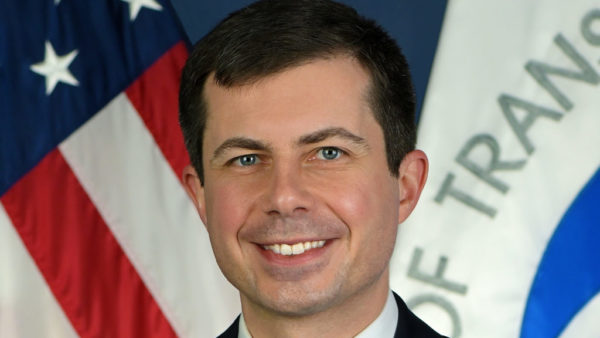
“With this announcement, we are advancing projects so large, complex and ambitious that they could not get funded under the infrastructure programs that existed prior to the Biden administration,” U.S. Transportation Secretary Pete Buttigieg said. “Our INFRA and Mega programs are helping build the cathedrals of American infrastructure: truly transformative projects that will change entire regions and our entire country for the better.”
* MPDG: Applicants for the Mega, INFRA and Rural (awarded in December 2023) grant programs were evaluated under the USDOT’s streamlined MPDG (Multimodal Project Discretionary Grant) application. This combined application was designed to reduce the administrative burden of applying for grants, USDOT said, and allowed applicants to apply for all three programs through the same application.

